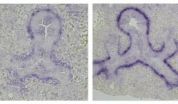(Press-News.org) Communal irrigation systems known as acequias that have sustained farming villages in the arid southwestern United States for centuries are struggling because of dwindling snowmelt runoff and social and economic factors that favor modernism over tradition, a Dartmouth College study finds.
The results reflect similar changes around the world, where once isolated communities are becoming integrated into larger economies, which provide benefits of modern living but also the uncertainties of larger-scale market fluctuations. The study appears in the journal Global Environmental Change.
A PDF of the study is available on request.
Acequias evolved in the Middle East and Roman Empire and were introduced into the Americas by Spanish colonizers in the early 1600s. The term acequia refers to both communities of farmers as well as engineered irrigation canals that carry snowmelt-driven runoff to farm fields as a way for the agricultural communities to share a scarce resource in arid regions. The acequias system, which is common in northern New Mexico and southern Colorado, provides a model of communal ownership that governs water rights, distribution, disputes and other issues.
Dartmouth Assistant Professor Michael Cox, the study's author, examined the acequias of the Taos Valley in northern New Mexico. He found the acequias are declining in terms of their agricultural productivity and have mostly lost their common property-based livestock pasturing system. The changes stem from a declining amount of snowmelt and a host of socio-economic factors, many resulting from population growth in the nearby city of Taos. The factors include state-level public policies that grant private water rights to individuals, which conflicts with the acequias' water sharing traditions; newcomers who are increasing demand for what water remains; increased tourism and land use development; and declining reliance on traditions in favor of modern, highly integrated economies.
Researchers typically focus on successful examples of community-based common-pool resource management systems, but Cox's study, which used a mix of interview, survey, remote sensing and census data, is among the few to explore the deterioration of such systems.
"While some of these changes can be attributed to declines in water availability, much of the change results from social drivers, including demographic changes, regional-to-global market forces and public policies," Cox says. "It thus seems quite unlikely that the acequias in Taos will return to their historical situation, meaning the acequia farmers must adapt to the current conditions."
INFORMATION:
Professor Cox is available to comment at Michael.E.Cox@dartmouth.edu.
The research was supported by the National Science Foundation.
Broadcast studios: Dartmouth has TV and radio studios available for interviews. For more information, visit: http://www.dartmouth.edu/~opa/radio-tv-studios/
Dartmouth study shows US Southwest irrigation system facing decline after 4 centuries
Reduced snowmelt, socioeconomic factors reflect pressures on once isolated communities around world
2014-02-13
ELSE PRESS RELEASES FROM THIS DATE:
Prenatal vitamin A deficiency tied to postnatal asthma
2014-02-13
NEW YORK, NY (February 12, 2014) — A team of Columbia University Medical Center (CUMC) investigators led by Wellington V. Cardoso, MD, PhD, has found the first direct evidence of a link between prenatal vitamin A deficiency and postnatal airway hyperresponsiveness, a hallmark of asthma. The study, conducted in mice, shows that short-term deficit of this essential vitamin while the lung is forming can cause profound changes in the smooth muscle that surrounds the airways, causing the adult lungs to respond to environmental or pharmacological stimuli with excessive narrowing ...
Satellite video shows movement of major US winter storm
2014-02-13
VIDEO:
This animation of NOAA's GOES satellite data shows the progression of the major winter storm in the US south from Feb. 10 at 1815 UTC/1:15 p.m. EST to Feb. 12...
Click here for more information.
A new NASA video of NOAA's GOES satellite imagery shows three days of movement of the massive winter storm that stretches from the southern U.S. to the northeast.
Visible and infrared imagery from NOAA's GOES-East or GOES-13 satellite from Feb. 10 at 1815 UTC/1:15 p.m. EST to ...
Could restless sleep cause widespread pain in older folks?
2014-02-13
Researchers in the U.K. report that non-restorative sleep is the strongest, independent predictor of widespread pain onset among adults over the age of 50. According to the study published in Arthritis & Rheumatology (formerly Arthritis & Rheumatism), a journal of the American College of Rheumatology (ACR), anxiety, memory impairment, and poor physical health among older adults may also increase the risk of developing widespread pain.
Muscle, bone and nerve (musculoskeletal) pain is more prevalent as people age, with up to 80% of people 65 years of age and older experiencing ...
Sedation before nerve block increases risk, not pain relief
2014-02-13
New research suggests that sedating patients before a nerve block needed to diagnose or treat chronic pain increases costs, risks and unnecessary surgeries, and sedation does nothing to increase patient satisfaction or long-term pain control.
"Sedation doesn't help, but it does add expense and risk," says study leader Steven P. Cohen, M.D., a professor of anesthesiology and critical care medicine at the Johns Hopkins University School of Medicine. "In some places, every patient is being sedated. Our research shows it should be used very sparingly."
Nerve blocks, performed ...
Laboratory detective work points to potential therapy for rare, drug-resistant cancer
2014-02-13
PITTSBURGH, Feb. 13, 2014 – University of Pittsburgh Cancer Institute (UPCI) scientists have shown that old drugs might be able to do new tricks.
By screening a library of FDA-approved anticancer drugs that previously wouldn't have been considered as a treatment for a rare type of cancer, UPCI scientists were surprised when they found several potential possibilities to try if the cancer becomes resistant to standard drug treatment.
The discovery, which will be published in the February 15th issue of Cancer Research, demonstrates that high-throughput screening of already ...
Researchers find source of new lineage of immune cells
2014-02-12
The elusive progenitor cells that give rise to innate lymphoid cells—a recently discovered group of infection-fighting white blood cells—have been identified in fetal liver and adult bone marrow of mice, researchers from the University of Chicago report early online in the journal Nature.
Innate lymphoid cells (ILCs) are among the first components of the immune system to confront certain pathogens. They have a critical function at mucosal barriers—locations such as the bowel or the lung—where the body comes in direct contact with the environment. Yet they went undetected ...
NREL report finds similar value in 2 CSP technologies
2014-02-12
Parabolic troughs and dry-cooled towers deliver similar value for concentrating solar power (CSP) plants, despite different solar profiles, a new report by the Energy Department's National Renewable Energy Laboratory has found.
The report, "Estimating the Performance and Economic Value of Multiple Concentrating Solar Power Technologies in a Production Cost Model," found that the value of delivered energy of dry-cooled tower and parabolic trough CSP plants, integrated with thermal energy storage, are quite similar.
CSP with thermal energy storage is a unique source of ...
Double mastectomy halves death risk for women with BRCA-related breast cancer
2014-02-12
TORONTO, ON, February 11, 2014 — Women with BRCA-related breast cancer who have a double mastectomy are nearly 50 per cent less likely to die of breast cancer within 20 years of diagnosis compared to women who have a single mastectomy, according to a new study led by Women's College Hospital's Kelly Metcalfe.
The findings, published in the British Medical Journal, suggest a double mastectomy may be an effective first-line treatment for women with early-stage breast cancer who carry a BRCA1 or BRCA2 genetic mutation. The BRCA1/2 genes belong to a class of genes that ...
Skin reactions during radiation therapy preventable
2014-02-12
Severe skin reactions during radiation therapy could be prevented by applying a thin transparent silicone dressing to the skin from the first day of treatment, clinical research from New Zealand shows.
Although many skincare products have been tested in clinical trials over the years, until now none have been able to completely prevent severe skin reactions, says senior lecturer Dr Patries Herst of University of Otago Wellington's Department of Radiation Therapy.
Dr Herst and her team of radiation therapists, oncology nurses and medical physicists have completed five ...
The genome of clonal raider ant provides a promising model to study social evolution and behavior
2014-02-12
Social insects, which usually have specialized behavioral groups (also called castes), are important models for social evolution and behavior researches. How division of labor in insect societies is regulated is an outstanding question and not fully understood yet. However, in many social insect species, experimental control over important factors that regulate division of labor, such as genotype and age, is limited. In a study published online on February 6th in Current Biology, researchers from Rockefeller University and BGI-Shenzhen have sequenced the genome of the queenless ...
LAST 30 PRESS RELEASES:
Archaeologists use AI to create prehistoric video game
Mitochondria migrate toward the cell membrane in response to high glucose levels
Tiny viral switch offers hope against drug-resistant bacteria
Most parents aware of early peanut introduction guidelines, but confused about details
HPV vaccine can protect against severe lesions of the vulva and vagina
Virtual care provision and emergency department use among children and youth
Quadrivalent HPV vaccine and high-grade vulvovaginal lesions
Insights into dry eyes gained from stem cell-derived tear glands
Researchers identify 166 human pluripotent stem cell lines available for use in clinical applications
Europa Clipper instrument uniquely observed interstellar comet 3I/ATLAS
UN University Report challenges climate change as sole trigger of Syrian Civil War, exposing governance failures in drought response
Real estate investment trust (REIT) acquisition associated with hospital closure and bankruptcy
New Raman imaging system detects subtle tumor signals
Boston Children’s receives a $7.5 million grant from Aligning Research to Impact Autism (ARIA) to provide clinical research coordination for the IMPACT Network
Spray-on antibacterial coating offers new protection for plants against disease and drought
ESMT Berlin study: What makes a first offer successful in negotiations
Groundbreaking ceremony marks the beginning of CTAO-South Array construction in Chile
Why swearing makes you stronger
What prevents more cancer patients from enrolling in potentially life-saving clinical trials?
UK’s worst-case climate risks laid bare for lawmakers
A decline in churchgoing linked to more deaths of despair
TAMEST announces Maralice Conacci-Sorrell, Ph.D., UT Southwestern Medical Center, as 2026 Mary Beth Maddox Award & Lectureship Recipient
Global study to evaluate whether dengue outbreaks can be anticipated earlier
Chonnam National University researchers propose innovative voltage-loop control for power factor correction
Accelerating next-generation drug discovery with click-based construction of PROTACs
Detecting the hidden magnetism of altermagnets
$7M gift supports health research, engineering and athletics at UT San Antonio
NU-9 halts Alzheimer’s disease in animal model before symptoms begin
Hospitals acquired by real estate investment trusts associated with greater risk of bankruptcy, closure
City of Hope scientists study rare disorder to uncover mechanism and hormone regulation underlying fatty liver disease and sweet aversion
[Press-News.org] Dartmouth study shows US Southwest irrigation system facing decline after 4 centuriesReduced snowmelt, socioeconomic factors reflect pressures on once isolated communities around world



